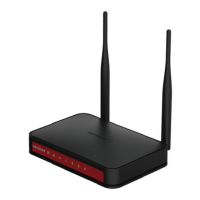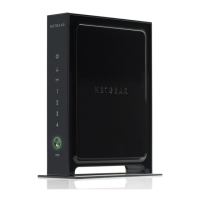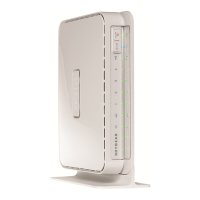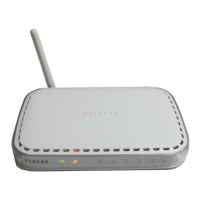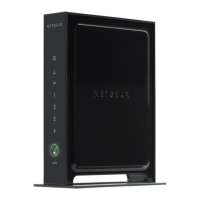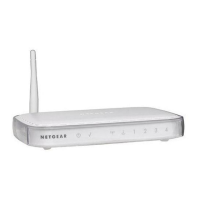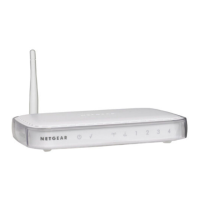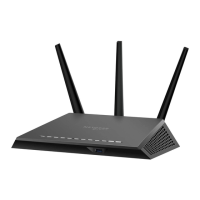genie ADVANCED Home
43
JWNR2010v5 N300 Wireless Router
• Disable Port Scan and DoS Protection. DoS protection protects your LAN against
denial of service attacks such as Syn flood, Smurf Attack, Ping of Death, Teardrop
Attack, UDP Flood, ARP Attack, Spoofing ICMP, Null Scan, and many others. By
default, this check box is cleared.
• Default DMZ Server. A demilitarized zone (DMZ) server can be helpful when you
play online games and use videoconferencing. Be careful when you use this feature
because it makes the firewall security less effective. For more information, see
Default DMZ Server on page 44.
• Respond to Ping on Internet Port. If you want the router to respond to a ping from
the Internet, select this check box. By default, this check box is cleared. Use this
feature only as a diagnostic tool because it allows your router to be discovered. Do
not select this check box unless you have a specific reason.
• MTU Size (in bytes). The normal MTU (maximum transmit unit) value for most
Ethernet networks is 1500 bytes, or 1492 bytes for PPPoE connections. For some
ISPs, you might need to reduce the MTU. This change is rarely required. Do not make
this change unless you are sure that it is necessary for your ISP connection. For more
information, see
Change the MTU Size on page 44.
• NAT Filtering. Network Address Translation (NAT) determines how the router
processes inbound traffic:
- Secured NAT provides a secured firewall to protect the computers on the LAN
from attacks from the Internet, but might prevent some Internet games,
point-to-point applications, or multimedia applications from functioning. By default,
the Secured radio button is selected.
- Open NAT provides a much less secured firewall, but allows almost all Internet
applications to function.
• Disable SIP ALG. Some Voice over IP (VoIP) applications do not function well with
the Session Initiation Protocol (SIP) Application Layer Gateway (ALG). Selecting the
check box to turn off the SIP ALG might enable connected VoIP devices to create and
accept a VoIP call through the router. By default, this check box is cleared.
• Disable IGMP Proxying. IGMP proxying allows computers on the LAN to receive the
multicast traffic they are subscribed to from the Internet. By default, this check box is
selected, and the IGMP proxy is disabled, preventing multicast traffic from the Internet
to the LAN. Clear the Disable IGMP Proxying check box to allow multicast traffic
from the Internet to the LAN.
• VPN Passthrough. The router supports VPN passthrough for IPSec, PPTP, and
L2TP.
- IPSec Passthrough. To enable or disable IPSec passthrough, select the Enable
or Disabled radio button.
- PPTP Passthrough. To enable or disable PPTP passthrough, select the Enable
or Disabled radio button.
- L2TP Passthrough. To enable or disable L2TP passthrough, select the Enable
or Disabled radio button.
4. Click the Apply button.
Your changes are saved.
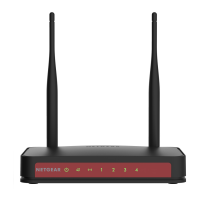
